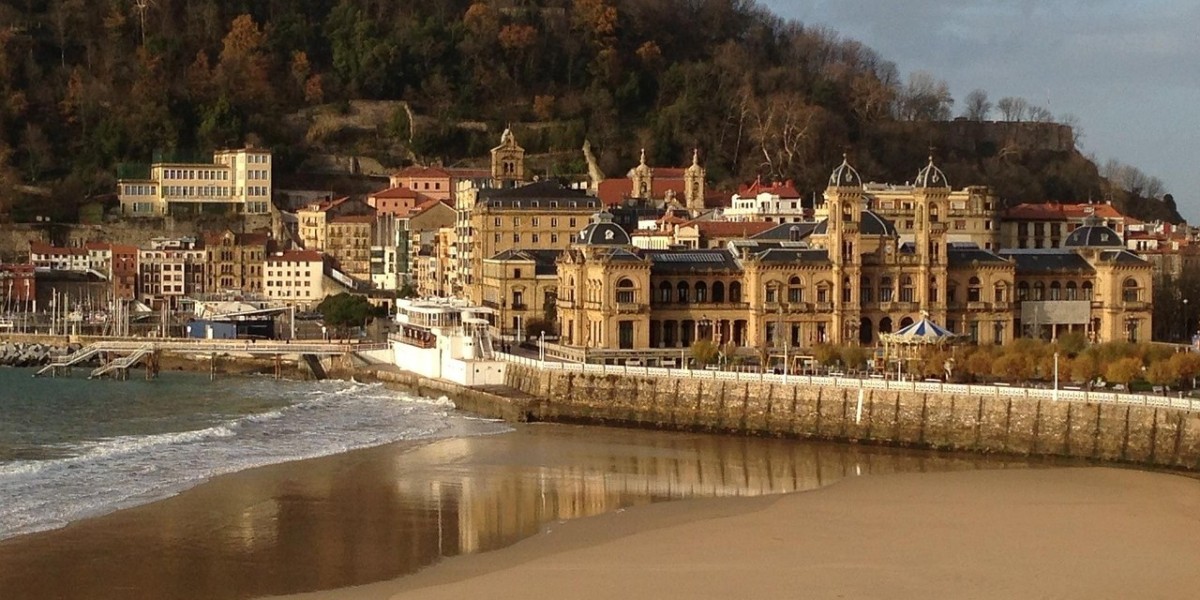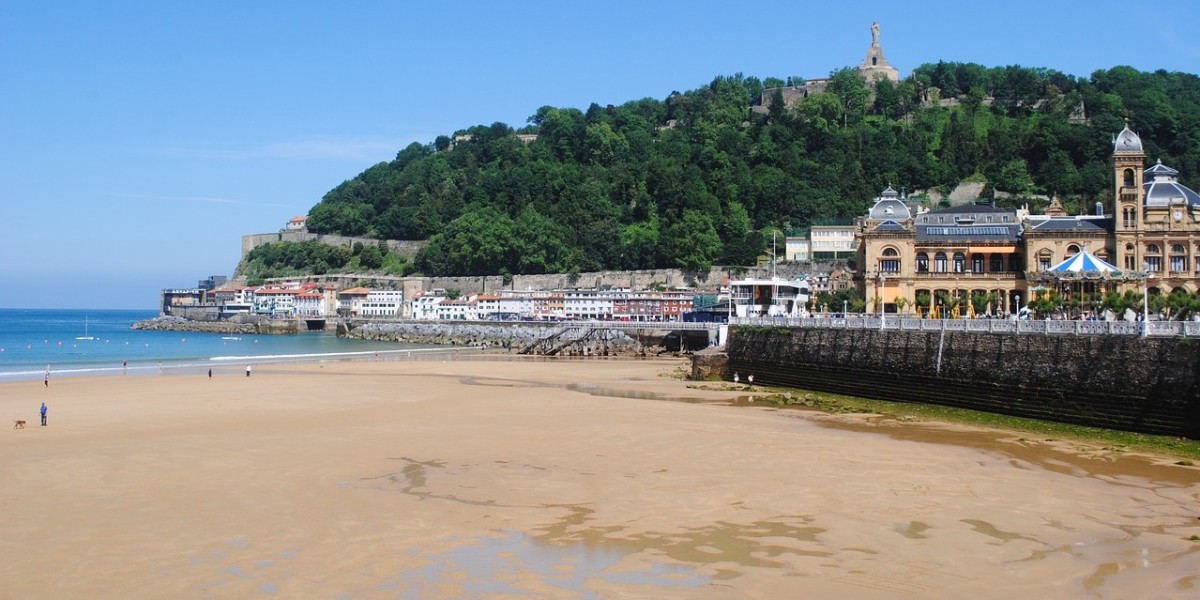
San Sebastián, or Donostia as it's known locally, is a city that truly sparkles. Tucked into the corner of the Bay of Biscay, it's famous worldwide for its stunning crescent-shaped beach, La Concha, and a food scene that ranges from humble pintxos bars to a dazzling collection of Michelin-starred restaurants. But beyond the glamour, there's a proud Basque heart and a unique local culture. Thinking about living in San Sebastián means embracing a lifestyle that's all about quality, from the food to the fresh sea air, so let’s take a look at what that really means.
Is San Sebastián a good place to live?
The city offers an incredible quality of life, blending breathtaking natural scenery with a sophisticated but relaxed urban atmosphere. Life here gives you dramatic beaches and lush green hills right on your doorstep, perfect for anyone who loves hiking, surfing, or simply a stroll along the promenade. It’s also a remarkably safe and compact city, and you can walk almost everywhere you need to go.
However, it’s not without its challenges, and it isn't the right fit for everyone. The biggest hurdle is the cost of living, which is one of the highest in Spain. You also have to be prepared for the weather. The region’s beautiful green landscape is a product of its famously high rainfall, so you’ll need to pack a good raincoat and embrace the poetic, misty days just as much as the sunny ones.
Pros and cons of living in San Sebastián

Like any city, living in San Sebastián has its incredible highs and a few challenging lows.
The pros are plentiful and include:
- World-class gastronomy: this is a city built for food lovers. You'll find pintxos bars and some of the world's most celebrated Michelin-starred restaurants.
- Stunning natural scenery: the city is framed by the iconic La Concha bay and the wilder Zurriola beach, with lush green hills rising up all around.
- High quality of life: San Sebastián is clean, incredibly safe, and compact enough to explore on foot. It has a sophisticated and calm atmosphere that’s hard to find elsewhere.
- Rich Basque culture: This isn't just Spain; it's the Basque Country. You'll find a unique language (Euskara), distinct traditions, and a very strong local identity.
Like anywhere, there are disadvantages to living here:
- Cost of Living: housing, in particular, is extremely expensive, both to rent and to buy.
- The rainy weather: they don't call this region 'Green Spain' for nothing. San Sebastián gets a lot of rain throughout the year.
- Summer crowds: as a major tourist hotspot, the city gets incredibly busy in July and August. The beaches, streets, and bars can feel crowded, which can be a bit much when you live there year-round.
What are the best neighbourhoods to live in San Sebastian?

Choosing a neighbourhood is a crucial aspect of settling in San Sebastian. Each area offers a different atmosphere, and it is important to consider your personal preferences and daily needs before deciding.
Central
The Centre, with its elegant architecture and cobbled streets, is perfect for those looking to be in the heart of the city, with easy access to shops, bars and restaurants.
El Antiguo
On the other hand, El Antiguo is ideal for those who prefer a quieter neighbourhood, while remaining close to Ondarreta beach and Monte Igueldo.
Gros
Gros is an excellent choice for those who value a more modern and dynamic atmosphere. This neighbourhood, popular with young people and surfers, has a lively nightlife and is close to Zurriola Beach.
Amara
On the other hand, if you're looking for a more stately and traditional setting, Amara offers wide avenues and many services, making it a comfortable alternative for families.
Is San Sebastián expensive to live?

When it comes to the cost of living in San Sebastián, it's best to be prepared: it's Spain's most expensive city, and this is reflected in almost every aspect of daily life, especially housing.
San Sebastián real estate and rent
When it comes to housing, the figures from June 2025 show that property prices in San Sebastián averaged a staggering €6,071 per m². Renting doesn't offer much of a reprieve, with average rent prices in June 2025 at €18.7 per m², a 1.4% increase on the previous year. This means a typical 80m² apartment would set you back around €1,496 per month.
Of course, prices vary hugely depending on the neighbourhood. The most exclusive part of San Sebastián is the Centro-Miraconcha area, where property prices reached an average of €8,475 per m² in June 2025. For those on a tighter budget, looking towards the eastern part of the city might be a good move. In the neighbourhood of Altza, for example, property was much more affordable, averaging around €3,757 per m².
Living costs in San Sebastián
Daily expenses in San Sebastián follow a similar pattern. According to Numbeo, when it comes to eating out, an inexpensive meal will likely cost you around €15. For a sit-down dinner for two at a mid-range restaurant, you should budget for between €50 and €80. A coffee in a local café will set you back about €2, while a beer is typically between €3 and €4. At home, you can expect monthly utility bills for a standard flat to be in the region of €120, although this will naturally vary with your lifestyle and usage.
For transport, a single bus journey costs €1.85, but it’s a good idea to get a Mugi travel card to make your trips cheaper.
How much do I need to earn to live in San Sebastian?
When considering living in San Sebastian, one of the most relevant questions is how much income you need to maintain an adequate standard of living in this charming city. While prices are certainly high, it's worth noting that salaries in this part of Spain are also some of the country's highest, with average earnings around €2,200, which helps to balance out the cost of living.
- For a single person, a gross monthly salary of around €1,500 could cover basic expenses such as renting a shared flat, food, transport and modest leisure activities.
- For families or those seeking a more comfortable lifestyle, it is estimated that a household of four would need an income of around €3,500 per month to live comfortably in San Sebastian.
Living in San Sebastian or living in Bilbao

The two cities are only an hour apart, but they offer completely different lifestyles. Bilbao is the larger, more bustling city that has famously reinvented itself from an industrial workhorse into a vibrant cultural hub, centred around the incredible Guggenheim Museum. It feels more like a lived-in, dynamic city, and crucially, your money goes a lot further here. On the other hand, San Sebastián is all about elegance and indulgence.
In Bilbao, you’ll find a much wider range of property options at more accessible prices. In San Sebastián, the market is notoriously tight and expensive. To put it into perspective, in June 2025, the average price in nearby Bilbao was considerably lower at €3,646 per m², reflecting its status as a premier tourist destination. Ultimately, your choice depends on what you prioritise. Bilbao offers a more affordable, big-city buzz with a thriving arts scene, while San Sebastián offers unparalleled natural beauty and gastronomy, but at a premium cost.
Living in San Sebastián as an expat
For expats, settling into San Sebastián means adapting to a lifestyle that’s deeply connected to its environment and traditions. Lunch is often a long, leisurely affair, and dinner rarely happens before 9 or 10 pm. You’ll find that many shops still close for a couple of hours in the afternoon.
San Sebastián has lots of things to do, offering a fantastic, well-balanced lifestyle with a big focus on the outdoors. Locals make the most of the easy access to nature with hiking, cycling, and water sports. The social scene largely revolves around friends and food, especially the famous Thursday night tradition where the bars in neighbourhoods like Gros are packed for pintxos and drinks. Many people who live here long-term prefer to be based in more residential areas like Amara or Egia, which are still well-connected but offer a bit more space and peace. For remote workers, a growing number of coworking spaces such as The Social Hub and Impact Hub Donostia provide a great alternative to working from home.
A great way to really get under the skin of the city and build your circle is by tapping into the local scene. Look out for an intercambio (language exchange) night at a local bar, which is a fantastic way to learn Spanish or Basque and meet both locals and other internationals. Platforms like Meetup have active groups for things like hiking, surfing, or photography in the area. Volunteering is another brilliant option; you could look into helping out at one of the city's many cultural events, like the famous Film Festival, or even joining a local beach clean-up initiative.